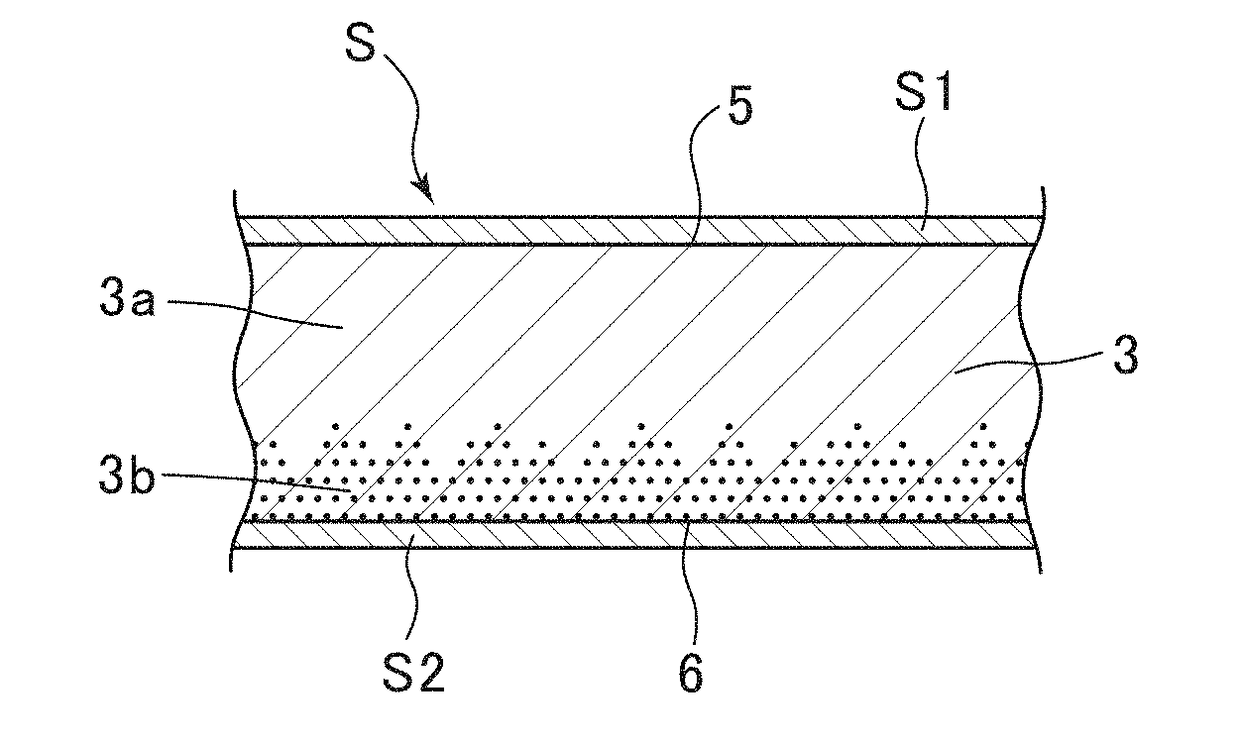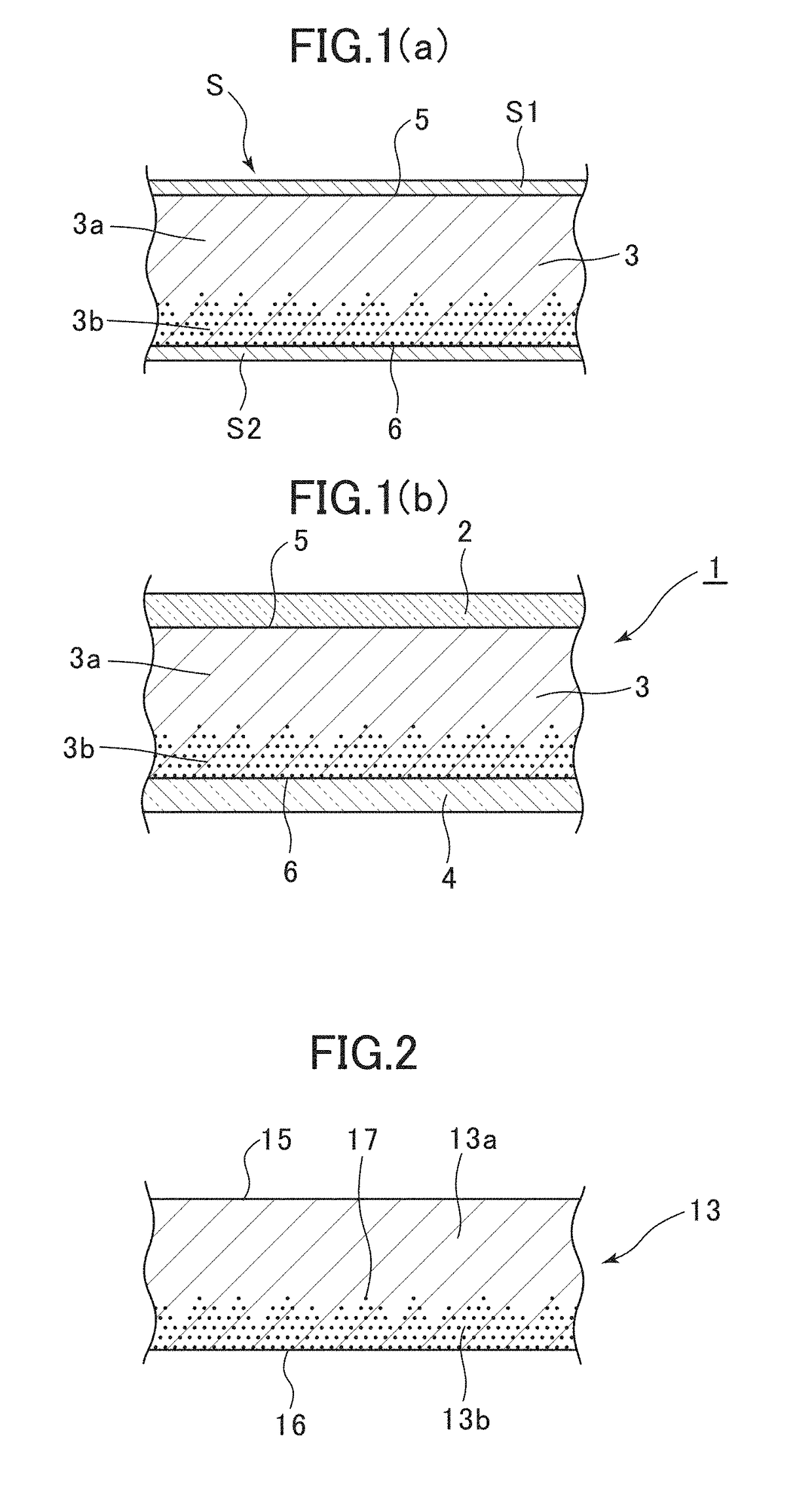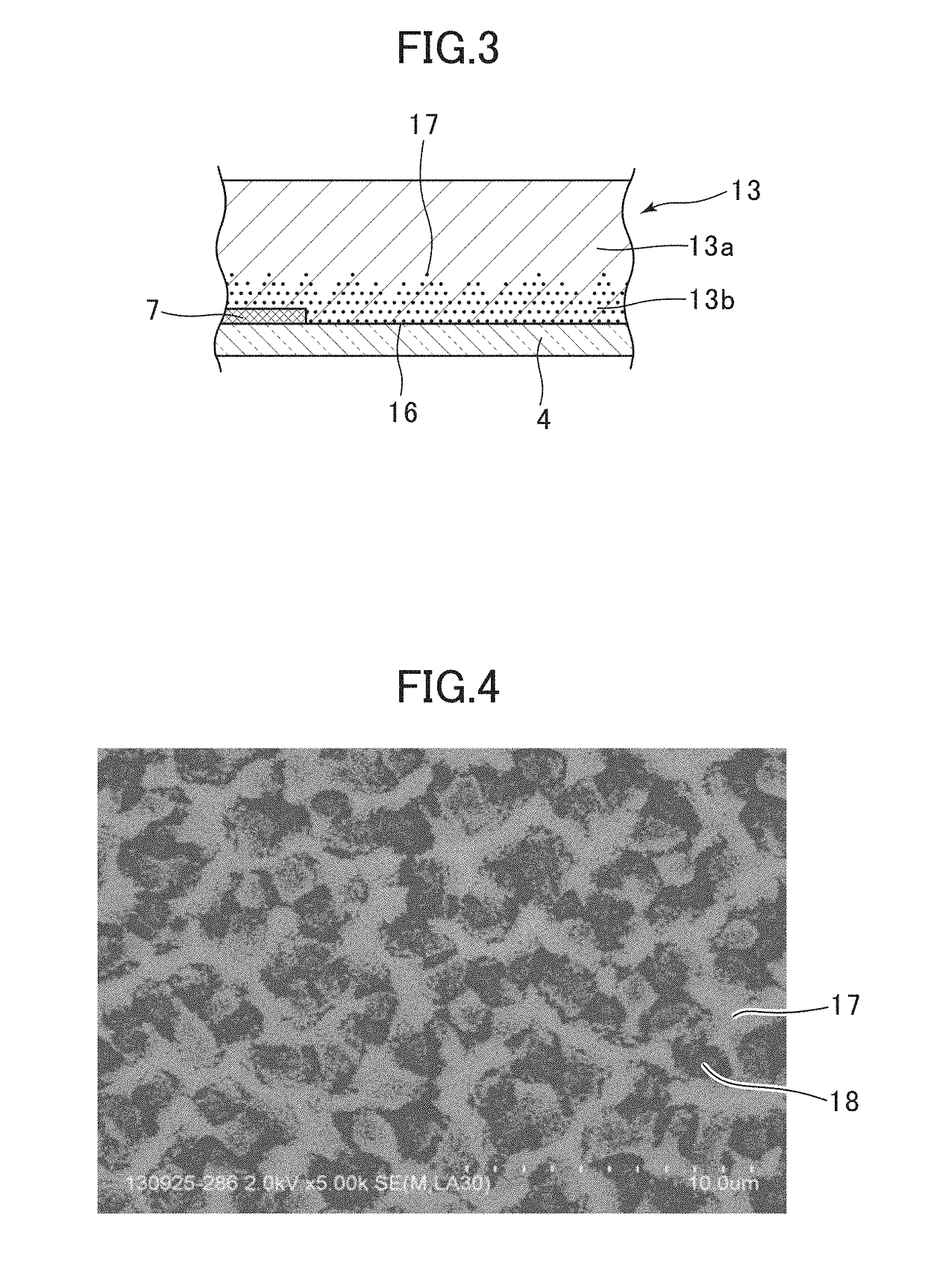Electroconductive film laminate comprising transparent pressure-sensitive adhesive layer
a technology of adhesive layer and conductive film, which is applied in the direction of film/foil adhesive, conductive layer on insulating support, synthetic resin layered products, etc., can solve the problems of poor pattern invisibility, deterioration of properties, and the composition itself becomes costly, so as to suppress reflection, suppress interface reflection, and reduce the effect of refractivity
- Summary
- Abstract
- Description
- Claims
- Application Information
AI Technical Summary
Benefits of technology
Problems solved by technology
Method used
Image
Examples
##ventive example 1
Inventive Example 1
[0109]Based on the method described in the aforementioned , an optical element laminate depicted in FIG. 9(a) was produced. The optical element laminate depicted in FIG. 9(a) was formed by: attaching one-side surfaces of two refractive index adjustment zone (sublayer)-formed pressure-sensitive adhesive sheets (A1) each defined by the refractive index adjustment zone, respectively, to surfaces of two patterned ITO layers on opposite sides of a double-sided transparent electroconductive film (1) (laminate 41); laminating an evaluation ZEONOA 47 to the other-side surface of an upper one of the refractive index adjustment zone (sublayer)-formed pressure-sensitive adhesive sheets (A1); and laminating an evaluation black PET film 48 for reflectance measurement, to the other-side surface of a lower one of the refractive index adjustment zone (sublayer)-formed pressure-sensitive adhesive sheets (A1).
##ventive example 2
Inventive Example 2
[0110]An optical element laminate depicted in FIG. 9(b) was produced in the same manner as that in Inventive Example 1. The optical element laminate depicted in FIG. 9(b) was formed by: attaching one-side surfaces of two refractive index adjustment zone (sublayer)-formed pressure-sensitive adhesive sheets (B1) each defined by the refractive index adjustment zone, respectively, to surfaces of two patterned ITO layers on opposite sides of a double-sided transparent electroconductive film (2) (laminate 45); laminating an evaluation ZEONOA 47 to the other-side surface of an upper one of the refractive index adjustment zone (sublayer)-formed pressure-sensitive adhesive sheets (B1); and laminating an evaluation black PET film 48 for reflectance measurement, to the other-side surface of a lower one of the refractive index adjustment zone (sublayer)-formed pressure-sensitive adhesive sheets (B1).
##ventive example 3
Inventive Example 3
[0111]An optical element laminate depicted in FIG. 9(c) was produced in the same manner as that in Inventive Examples 1 and 2. The optical element laminate depicted in FIG. 9(c) was formed by: attaching one-side surfaces of two refractive index adjustment zone (sublayer)-formed pressure-sensitive adhesive sheets (C1) each defined by the refractive index adjustment zone, respectively, to surfaces of two patterned ITO layers on opposite sides of a double-sided transparent electroconductive film (1) (laminate 41); laminating an evaluation ZEONOA 47 to the other-side surface of an upper one of the refractive index adjustment zone (sublayer)-formed pressure-sensitive adhesive sheets (C1); and laminating an evaluation black PET film 48 for reflectance measurement, to the other-side surface of a lower one of the refractive index adjustment zone (sublayer)-formed pressure-sensitive adhesive sheets (C1).
PUM
| Property | Measurement | Unit |
|---|---|---|
| thickness | aaaaa | aaaaa |
| thickness | aaaaa | aaaaa |
| refractive index | aaaaa | aaaaa |
Abstract
Description
Claims
Application Information
 Login to View More
Login to View More - R&D Engineer
- R&D Manager
- IP Professional
- Industry Leading Data Capabilities
- Powerful AI technology
- Patent DNA Extraction
Browse by: Latest US Patents, China's latest patents, Technical Efficacy Thesaurus, Application Domain, Technology Topic, Popular Technical Reports.
© 2024 PatSnap. All rights reserved.Legal|Privacy policy|Modern Slavery Act Transparency Statement|Sitemap|About US| Contact US: help@patsnap.com










